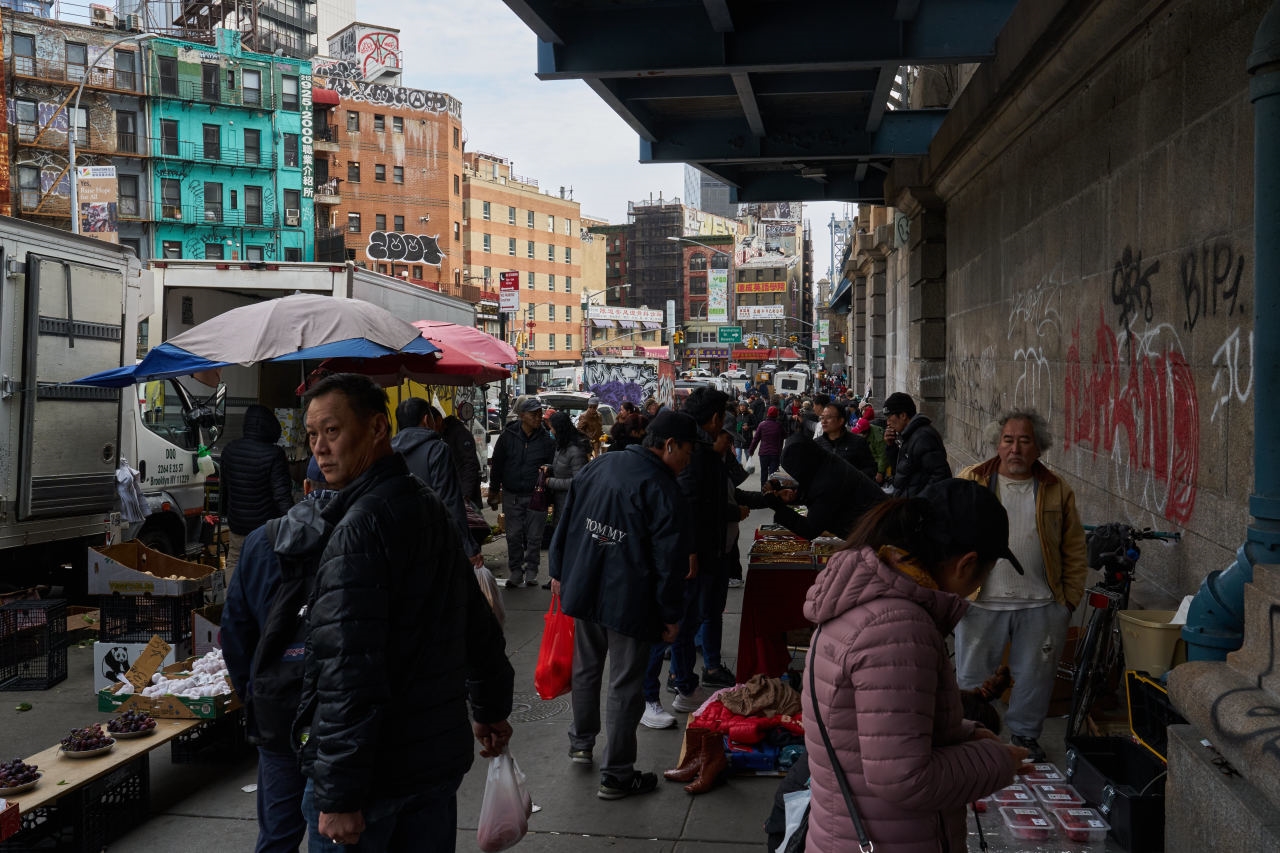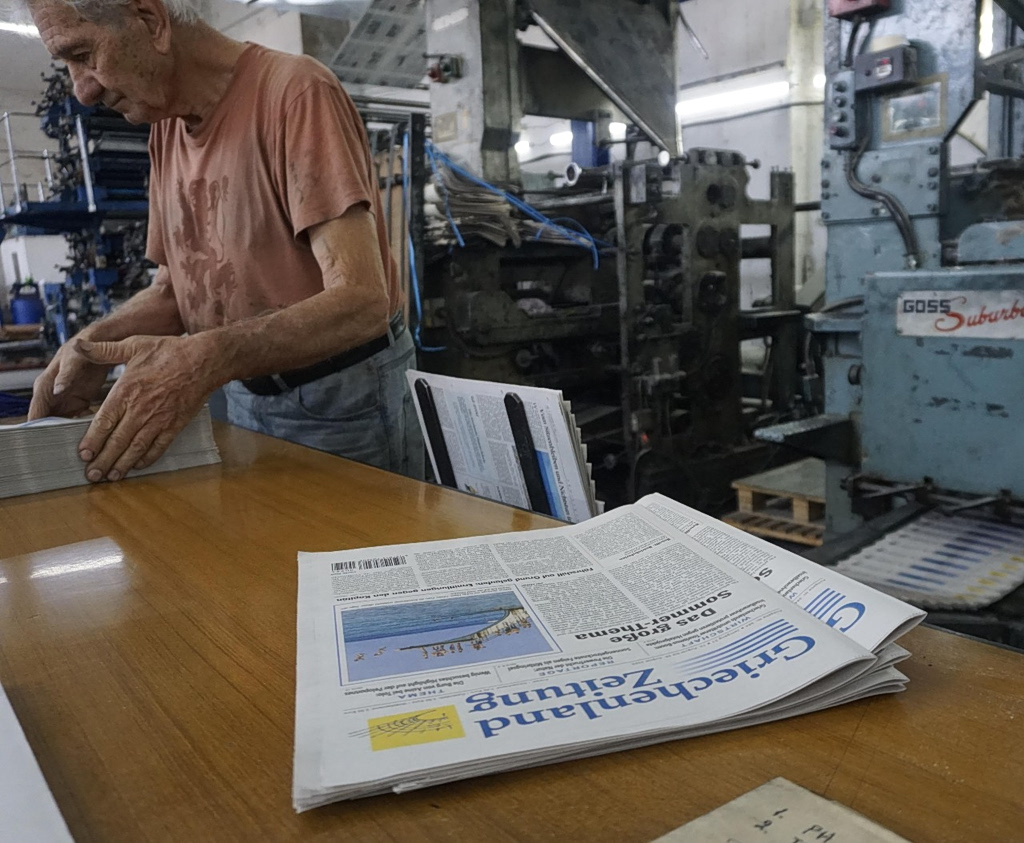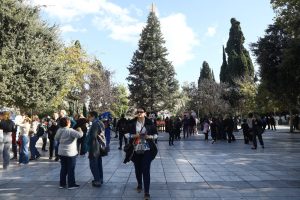NEW YORK—On weekends, tourists squeeze through Chinatown’s vibrant streets, cramming into shops for watermelon slushies and peanut-wheat noodles featured on social media.
Missing in action are the Chinese families that used to drive local commerce, with many having moved to other neighborhoods that offer more affordable housing or what they see as a more authentic Chinese experience.
Elsewhere, community leaders are fighting another slow-burning test for the neighborhood: civic projects that they say put an unfair strain on the community. Battles involve the city’s plans for a bigger jail tower and an additional homeless shelter.
Change is increasingly coming to Manhattan’s Chinatown, one of the oldest, most storied ethnic communities in the U.S., formed in the 19th century by immigrants directly from China and Chinese men who labored in California’s gold mines.
The north side of Sara D. Roosevelt Park, where old-timers used to garden and practice tai-chi, now draws homeless people and drug addicts. Historic shopping streets empty out by evening, with mom-and-pop businesses that survived the pandemic shutting their storefronts before nightfall. A generation of working-class Chinese has aged out, while younger Chinese people, turned off by the often poorly-maintained housing stock, have chosen to live elsewhere.
“If we don’t do something, we’re going to evaporate,” said Susan Lee, a community activist. “I don’t want to see Chinatown become like Little Italy,” she said, referring to the adjacent neighborhood that gave way to gentrification and is now mostly a tourist destination.
About 29.8% of the 148,789 people living in Chinatown and the Lower East Side identified as Asian in 2023, down from 34.8% in 2000, according to data from the U.S. Census and American Community Survey.
On Chinatown’s Mulberry Street, K.K. Discount Store owner Ken Li remembers when the neighborhood had several home-goods shops like his that sold Chinese teacups, woks and ceramic bowls. He and his wife came here 50 years ago and started their business in the 1990s.
The past few years have been particularly difficult for the couple. Rising rent and tariffs on Chinese imports have squeezed profits, but Li can only raise prices so much with customers facing inflation pressures elsewhere. He maintains shorter business hours, from 10 a.m. to 6 p.m. “Chinatown has been facing challenges not just for a few days, but for years,” he said.
Business owners in the neighborhood still cite fears of anti-Asian violence as a lingering effect of Covid-19. Few of them dare to predict the economic impact of an expanding trade war between Beijing and Washington, even as some voice support for President Trump.
Some residents and community leaders worry that newer businesses in Chinatown have altered the neighborhood’s cultural fabric, and see further signs of decline in still-empty storefronts. Others remain optimistic about Chinatown’s trajectory, and see new shops as signs of vitality.
Yin Kong, director of the community nonprofit Think!Chinatown, disagrees with the “doom and gloom picture” that she says some people see in the neighborhood’s future. She points to the arrival of newer restaurant brands from mainland China, Taiwan and a separate Chinatown in Flushing, Queens.
“People who are super OG are going to lament the closing of a lot of OG places,” she said. But, “We’re evolving as a community and population.”
Pho Ga Vang, a Vietnamese pho eatery, and Time Again, a late-night bar where patrons sit outside on colorful plastic chairs, are among the businesses that opened in recent months; Mei Lai Wah, a bakery established in 1968, is planning to reopen at a bigger location on Mott Street and continues to draw crowds willing to wait 20-plus minutes for its steamed barbecue pork buns.
While stores come and go, plans to build a larger prison and homeless shelter would be more permanent.
For more than a year, Pauline Leung, a 73-year-old originally from Hong Kong, withstood the noise and dust from the demolition of the Manhattan Detention Center across the street from her tenement building. Now she worries about plans to build a taller, more imposing jail tower on the site.
“If taking down a building was this disruptive, think how it will be to build a new one,” she said of the proposed 16-story building, set to house more than 1,000 inmates.
Leung also worries about her safety. “There are fewer people on the street and drug users right outside my entrance,” she said. “My son tells me not to come out after dark.”
Major felony offenses reported in the New York City Police Department’s Fifth Precinct, which includes Chinatown, totaled 1,334 in 2024, the highest level since 2001, according to NYPD data . Citywide, major crimes have eased slightly from a 2023 peak.
Chinatown resident Jennie Ma said she has noticed more homeless people hanging out in the area since the pandemic and has avoided taking her two children to more deserted parts of Sara D. Roosevelt Park.
Two years ago, Ma was among residents who fought the city’s plans for a homeless shelter across the street from her son’s preschool. The government ended up turning the location into a shelter for migrants, which was more acceptable to Ma.
The proposed homeless shelter on East Broadway would be the ninth shelter in or near Chinatown and is across the street from a mall that regularly draws homeless people and drug addicts, according to some community activists. That building used to be a center for commerce, with barbershops, doctors’ offices and a dim-sum banquet hall that drew longtime residents and newly arrived immigrants.
These days most of its spaces sit empty. “There were so many places in there that I loved,” said Amy Lau, a 76-year-old who lives nearby and opposes the proposed shelter.
The plan for a jail near the heart of Chinatown is part of a yearslong effort to overhaul New York’s correctional system and replace the Rikers Island complex with four smaller jails throughout the city. The city’s Committee on Criminal Justice has yet to sign off on its construction, estimated to cost $3.8 billion. Earlier this month, Chinatown seniors voiced their opposition at a committee budget hearing.
Across the street, Winsley Tang, who inherited an apartment building from his grandparents and owns a sugarcane-juice shop on the ground floor, worries a larger tower will be an eyesore and cast a huge shadow over the neighborhood. “Our concern is what the block will look like,” said Tang.
A spokeswoman for Mayor Eric Adams said the decision to place the jail in Chinatown was made before he took office and that the city would continue to engage with community members on it. She said the planned shelter was for public safety and would ensure people in the area aren’t left out on the street.
She added that the administration has allocated $44 million to “create more public space, make travel safer and revitalize public areas near the Brooklyn Bridge,” and it has given grants to small businesses.
Many community leaders say the money is a drop in the bucket compared with the expenditure on the jail, and that the city intends to keep Park Row, a major artery into Chinatown before the Sept. 11, 2001, terrorist attack closed. Many businesses want it reopened. Now they are worried about yet another city policy that will impede traffic: a new congestion toll for driving into southern Manhattan.
Zhi Cheng Zhang, owner of New Seng Seafood Restaurant, said his customers declined by more than half after the tolls began in January. He also now has to pay $9 each day to get into work from his home in Brooklyn.
“The impact was immediate,” he said. “It’s hard to survive.”
Write to Chao Deng at chao.deng@wsj.com




